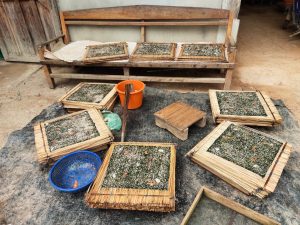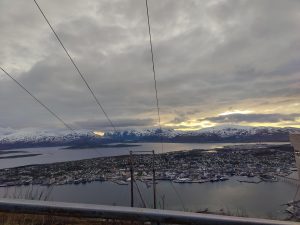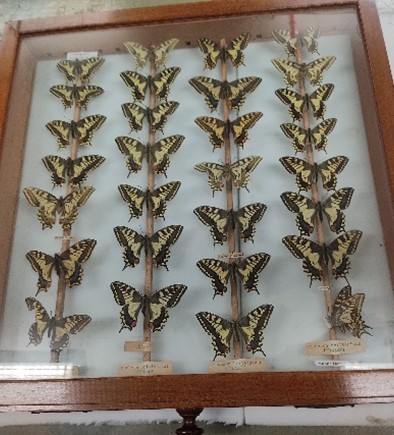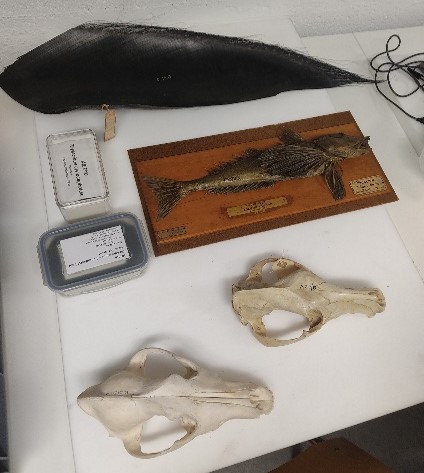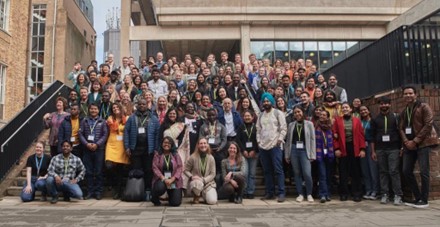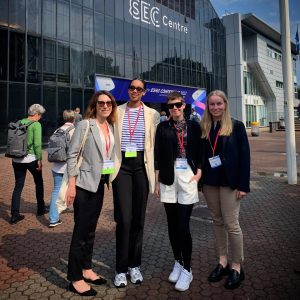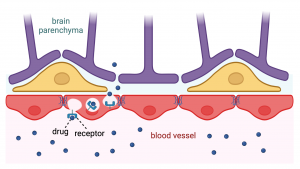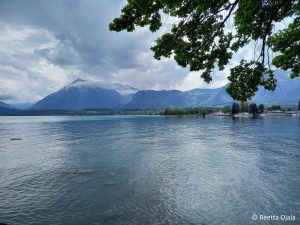Hello! My name is Erika Nordman, and I am a second-year student in the Bachelor program of Molecular Biosciences at the University of Helsinki. I am thrilled to be one of the 2023 HiLIFE Research trainees and during my internship, I am working on characterising a novel soil bacteriophage.
When I started my studies in University of Helsinki in autumn 2021, I quickly discovered my interest in the micro-world, particularly in bacteriophages. Bacteriophages are viruses utilising the bacterium’s machinery to replicate and spread. What initially caught my attention about bacteriophages was their funky appearance and as I delved deeper into the fascinating world of bacteriophages, I surprised myself how intriguing these alien-like creatures truly are!
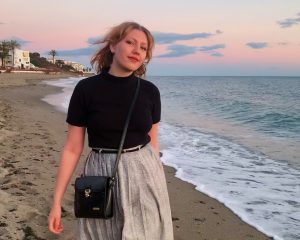
I started my traineeship last April under the lead of Minna Poranen and Hanna Oksanen at the Viikki campus in University of Helsinki. The group is involved in numerous research projects focused on studying viruses, and I feel honoured to have my own project within their group. So far, my internship has been very exciting for me, as becoming a virologist and scientist is my ultimate career goal in the future. Being able to participate in a research project within my own field of interest is a valuable opportunity to get during the early stage of my studies.
Applying Skills from a Lab Course in Research Work
Last autumn, I enrolled in a Helsinki University course “Practical Exercises of Bacteriology and Virology”. During our lab course, we collected a soil sample from the Viikki campus, enriched the sample and performed plaque assay using Bacillus cereus as the host bacterium for our experiment. The phage isolate was grown and purified by rate-zonal gradient ultracentrifugation and morphology of the bacteriophage was observed through transmission electron microscopy (TEM) and negative staining, and we determined the sizes of the main virion proteins using SDS-PAGE.
Our virus was assigned the name BCIP-1 (short for B. cereus infecting phage). BCIP-1 was found to have an icosahedral structure and possibly contain a lipid-layer inside the capsid head. In the image below are our transmission electron microscopy pictures of BCIP-1 virions obtained from our laboratory course. Unfortunately, the virus capsid appears empty, suggesting that something in our purification protocol used during our lab course caused the loss of BCIP-1 genome and potential fragmentation of the virus’ head and its possible tail.
Since the main objective of the lab course was to learn the basic protocols in virology, there was limited time for troubleshooting and repeating the experiments. My traineeship goal is to optimise the conditions for successful virus purification, redo the transmission electron microscopy and conduct additional experiments to uncover other properties of BCIP-1. For example, I would like to verify the presence of the lipid layer inside the virion, determine whether the BCIP-1 genome consists of DNA or RNA and if the genome is circulated or linear.

Negative-stained transmission electron microscopy pictures of the icosahedral BCIP-1 virions from University of Helsinki lab course “Practical Exercises of Bacteriology and Virology” in autumn 2022.
The Power of Laboratory Courses in Virology Discoveries
A similar laboratory course was enrolled at the University of Jyväskylä in 2010, where a bacteriophage isolation from a boreal lake water sample led to the characterization of a new type of virus in the family Finnlakeviridae. The described virus is unique as it is currently the only known icosahedral internal membrane-containing virus containing a single-stranded DNA genome (Laanto et a., 2017).
The B. cereus bacteriophage that I have isolated has similar properties with the Finnlakeviridae representative virus called FliP (Flavobacterium-infecting phage). These characteristics include isolation from a boreal environment, icosahedral capsid morphology, and an inner lipid membrane. However, this virus infects a gram-positive bacterium while the host of FLiP is gram-negative. The similarities make my virus extremely intriguing, since they suggest a possibility that BCIP-1 could be evolutionarily close to FliP.

Light scattering zones indicate the migration of the virus in a sucrose gradient during rate-zonal virus purification. These zones are documented and collected, and the protein concentration of the purified virus is determined using the Bradford assay.
Unravelling the mystery: Piece by Piece
So far, my journey with this virus has been filled with trials and errors. Since this bacteriophage has never been studied before, information is gathered bit by bit, combining and comparing various factors that could influence its ability to infect its host.
Currently I am concentrating on establishing buffering conditions to preserve the virions’ integrity and infectivity during virus purification. Once successful, I will have the opportunity to redo transmission electron microscopy and hopefully observe some intact virus particles! Ultimately, by comparing the characteristics identified with FLiP, my aim is to assess the potential of BCIP-1 being evolutionarily close to it and determine the possibility that BCIP-1 could belong to the same viral family.
Making novel viral discoveries is crucial, due to the immense number of viruses present in the environment, with only a fraction having been studied thus far. Viruses exhibit a vast genetic diversity within the soil, influencing the ecological dynamics in their respective ecosystems. Bacteriophages play a significant role in the horizontal gene transfer among their host organisms, maintaining the microbial homeostasis and contributing to nutrient circulation and organic matter decomposition. (Batinovic et al. 2019) By studying new viruses, we can enhance the understanding of the dynamics between viruses and their hosts, unraveling the mechanisms of viral infection, replication, and spread. Bacteriophages have wide-ranging applications in research and many biotechnological methods, and making novel viral discoveries fuels advancements in biotechnology, medicine, and bioremediation.
Everything Big Starts with Something Little
It has already been an extraordinary experience at this stage of my studies to witness how scientific projects can emerge from seemingly insignificant beginnings, such as collecting a spoonful of soil from a nearby ditch for a laboratory course. Step by step the puzzle of this bacteriophage is unraveled, and I have the privilege of being the first one to make discoveries about this virus. I am very curious to witness the pieces slowly come together enabling me a deeper understanding of this virus. Who knows, perhaps this virus is truly one-of-a-kind. I am looking forward to providing you with updates on my project in my upcoming HiLIFE blog post!
References:
Batinovic S, Wassef F, Knowler S, Rice D, Stanton C, Rose J, Tucci J, Nittami T, Vinh A, Drummond G, Sobey C, Chan HT, Seviour R, Petrovski S, & Franks A. 2019. Bacteriophages in Natural and Artificial Environments. Pathogens, 8(3), 100. https://doi.org/10.3390/pathogens8030100
Laanto E, Mäntynen S, De Colibus L, Marjakangas J, Gillum A, Stuart DI, Ravantti JJ, Huiskonen JT, Sundberg LR. 2017. Virus found in a boreal lake links ssDNA and dsDNA viruses. Proc Natl Acad Sci U S A. 114(31):8378-8383

